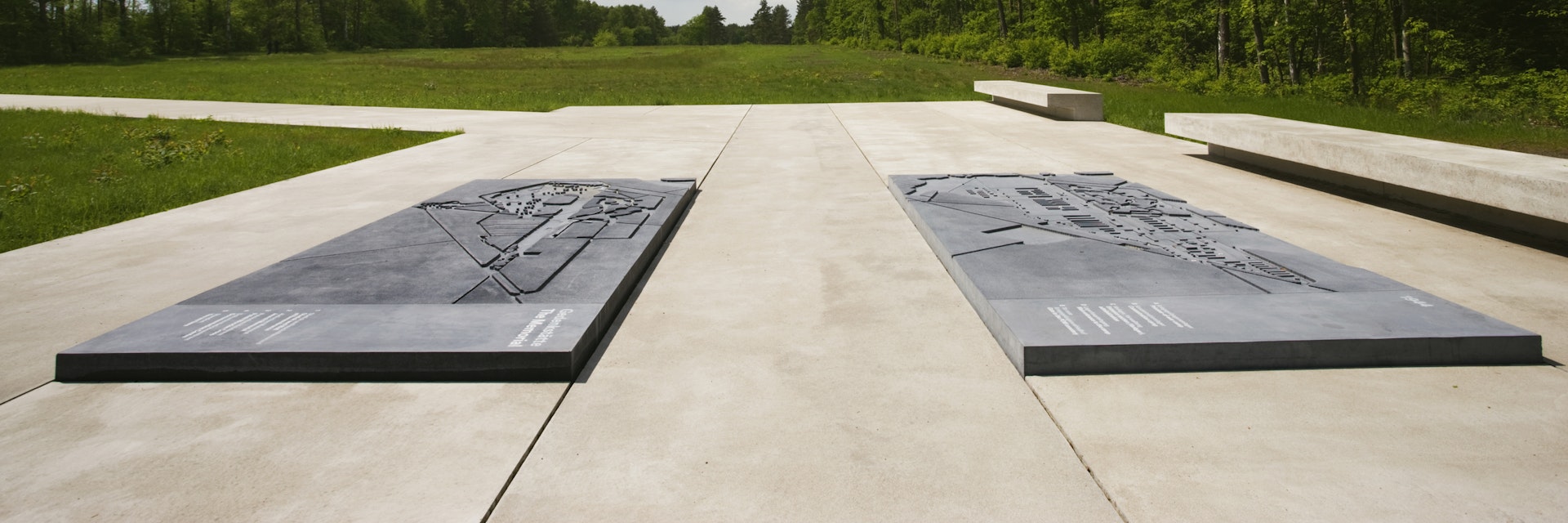The Nazi-built camp at Bergen-Belsen began its existence in 1940 as a POW camp, but became a concentration camp after being taken over by the SS in 1943, initially to imprison Jews as hostages in exchange for German POWs held abroad. In all, 70,000 prisoners perished here, most famously young diarist Anne Frank. The modern Documentation Centre museum poignantly chronicles the fates of the people who passed through here.
Unlike Auschwitz in Poland, none of the original buildings remain from the most infamous concentration camp on German soil. Yet the large, initially peaceful-looking lumps of grassy earth – covered in beautiful purple heather in summer – soon reveal their true identity as mass graves. Signs indicate approximately how many people lie in each – 1000, 2000, 5000, an unknown number…
Tens of thousands of prisoners from other camps near the front line were brought to Bergen-Belsen in the last months of WWII, causing overcrowding, an outbreak of disease and even more deaths. Despite attempts by the SS to hide evidence of their inhumane practices, by destroying documents and forcing prisoners to bury or incinerate their deceased fellow inmates, thousands of corpses still littered the compound when British troops liberated the camp on 15 April 1945.
After WWII, Allied forces used the troop barracks here as a displaced persons camp, for those waiting to emigrate to a third country (including many Jews who went to Israel after its establishment in 1948). This camp was closed in September 1950.
The Documentation Centre today is one of the best of its kind and deals sensitively with the lives of the camp prisoners – before, during and after incarceration. The exhibition is designed to be viewed chronologically, and part of it focuses on the role of Bergen-Belsen in its early years as a POW camp for mostly Soviet prisoners of war. About 40,000 POWs died here from 1939 to 1942, largely due to atrocious conditions. As you move through the exhibition you can listen to original-language descriptions through headphones (also subtitled on the screens), read documents and explanations, and watch a 25-minute documentary about the camp. This film includes a moving testimony from one of the British cameramen who filmed the liberation. Subtitled screenings rotate between different languages.
In the several hectares of cemetery within the gates is a large stone obelisk and memorial, with inscriptions to all victims; a cross on the spot of a memorial initially raised by Polish prisoners; and the Haus der Stille, where you can retreat for quiet contemplation.
A gravestone for Anne Frank and her sister, Margot, has also been erected (not too far from the cemetery gates, on the way to the obelisk). The entire family was initially sent to Auschwitz when their hiding place in Amsterdam was betrayed to police, but the sisters were later transferred to Bergen-Belsen. Although no one knows exactly where Anne lies, many pay tribute to their 15-year-old heroine at this gravestone.
Other monuments to various victim groups, including a Soviet memorial, are dotted across the complex.

